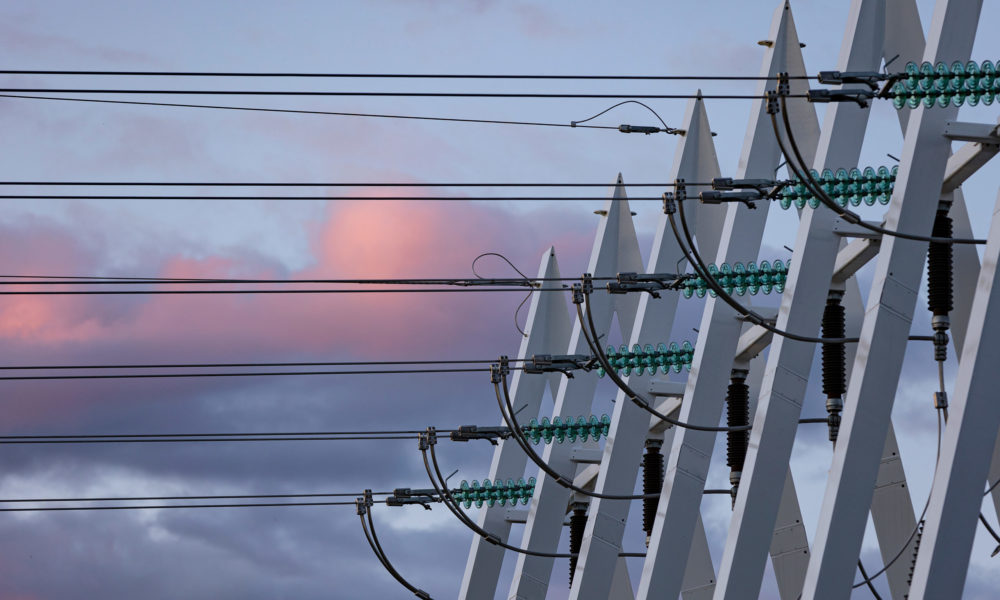Senior Expert Jani Pelvo works as a person in charge of operation of electrical installations and is responsible for ensuring electrical safety at the main grid’s substations, transmission lines and reserve power plants. The sphere of activities includes everyday maintenance work on the electricity grid, as well as a large amount of investment work. He also arranges electrical safety training for projects provided by Fingrid’s suppliers.
“Electrical safety is especially important when different parties are working near each other. When the conditions or plans change, it is important to ensure that every party is aware of the new circumstances and activities are adapted to suit the new conditions,” Jani Pelvo points out.
According to Jani Pelvo, not very many hazardous situations have been reported. When new transmission lines are built, it is important to take the existing electricity grids, such as regional grids, into consideration when assessing the risks.
“Hazardous situations arise when people operate large items of machinery in transmission line rights-of-way near overhead lines or underground cables belonging to regional or distribution networks.”
Care must always be taken to discharge induced voltage
When work is planned on the main grid, the risk posed by induced voltage should be kept in mind. When a part of the main grid is isolated so that work can be done, a voltage can be induced in the isolated part.
The danger can be avoided by earthing the location. Induced voltage is always life-threatening, and it can be of the order of several kilovolts.
“It is easier to understand the hazard posed by operating voltage on the worksite than the danger of induced voltage. That is why induced voltage causes more near-misses in work locations on the main grid than operating voltage. Working groups should ensure they discharge the induced voltage,” Pelvo says.
Mika Kärkkäinen, who works as Site Manager for Fingrid’s supplier, Omexom, had a near-miss involving induced voltage last year.
“When the earthing switches were opened, the induced voltage discharged into the measuring device, breaking the device. It was a life-threatening situation,” Mika Kärkkäinen says.
Since then, they have taken an even more cautious approach to checking the induced voltage.
“When we start work and when we return from breaks, we must ensure that the switching situation has not changed on the site. In practice, we always ensure that the main and additional earthings are connected,” Kärkkäinen says.
A field has also been added to the risk assessment form for notes concerning the induced voltage situation to ensure that nobody forgets to verify it.
Established practices create safety
Omexom provides basic maintenance services at Fingrid’s substations in Uusimaa, Häme and North Ostrobothnia. The company carries out work such as transformer measurement maintenance, maintenance of disconnectors and circuit-breakers, instrument transformer inspections, and repairs to devices of all types.
“We prepare a safety declaration at least three days before the work is due to begin to specify the potential risks and demarcate the work area. When the work begins, a risk assessment is also prepared,” Mika Kärkkäinen says.
When personnel lifts are used, a separate personnel lift inspection log is prepared and uploaded to the Quentic reporting application. The personal protective equipment and other tools are also inspected before use. When personnel lifts are used, there is a danger of coming into contact with a nearby energized bay.
“It is very important to demarcate the work area in a visible way. We use flagged warning lines and warning signs that indicate the presence of a energized bay.”
Work planning also involves ensuring that the working group has ample experience in safe working.
“When work is done in pairs, the working group must have enough personnel with the proper experience and safety training. These requirements vary depending on the complexity of the work,” says Mika Kärkkäinen.
Operating and electrical work safety instructions updated
Fingrid’s operating and electrical work safety instructions were updated in spring 2020. The update took account of the changes to the SFS 6002 electrical safety standard.
“Over the years, we have collected the comments we receive from users of the instructions in training sessions and other contexts, and based on these, we knew which parts of the instructions needed to be clearer,” Jani Pelvo says.
Some minor adjustments were made to the instructions, and some of the terminology was changed.
“The instructions were already good, but now they are even clearer and more functional.”






